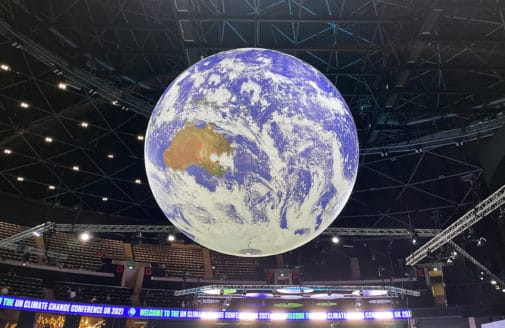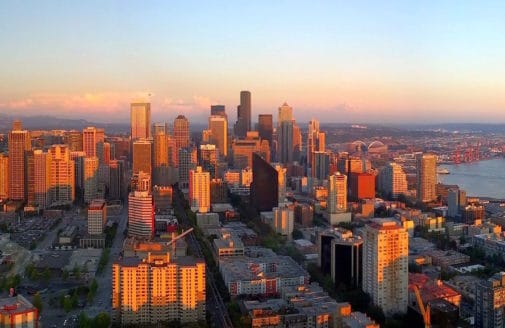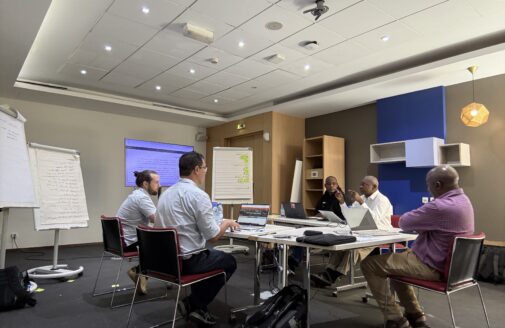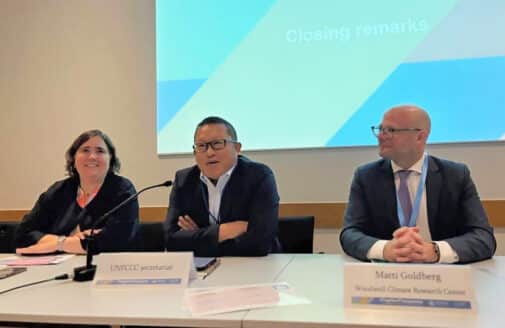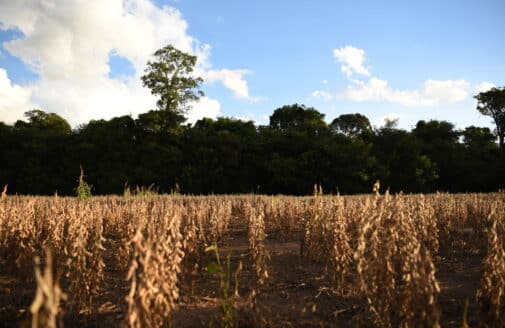This year in climate, 2021
A look back at a turning point year for climate change
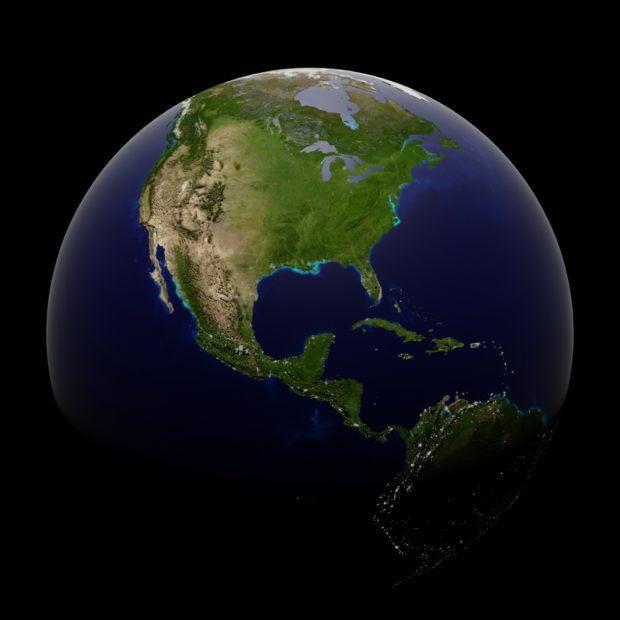
image by Greg Fiske
As another year passes with mounting emissions, we take stock of the big moments for climate change in 2021, from extreme weather events to steps forward on policy. Here’s is a look back at a potentially pivotal year for climate change:
Climate change is now front and center due to deadly weather
This year, the clear repercussions of climate change were impossible to ignore. Climate change worsens extreme weather, making Earth’s formerly reliable systems much more unpredictable. Widespread extreme weather events in 2021 had deadly consequences for the people caught in their paths.
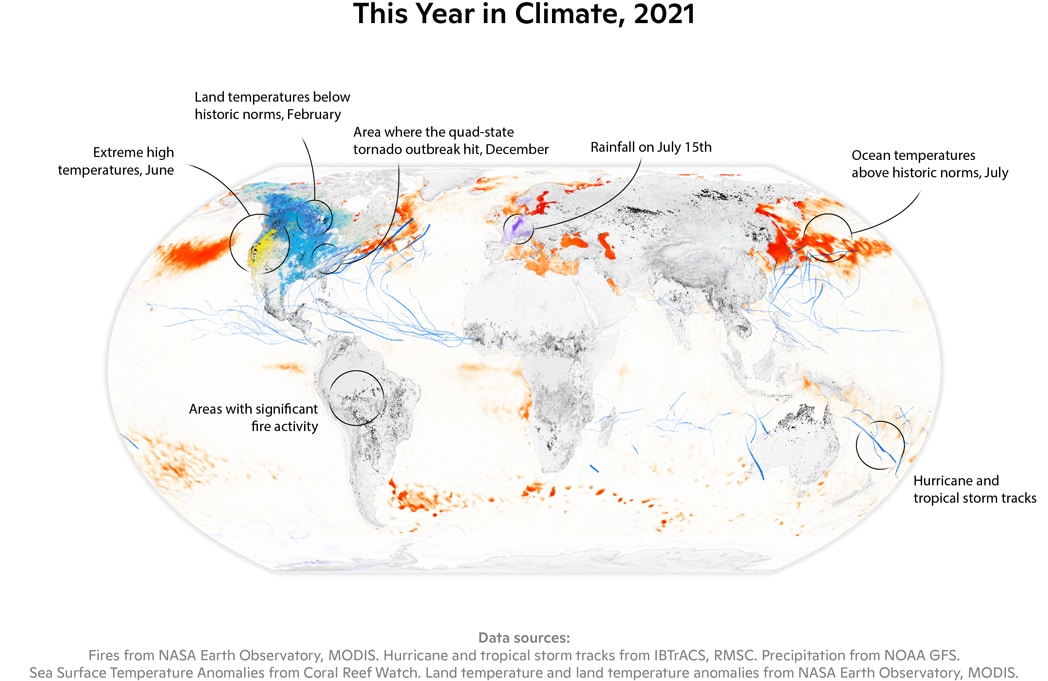
map by Carl Churchill
In February, Texas experienced a cold snap that killed 210 people across the state and left millions without power for several days. The freeze was exacerbated by the stretching of the stratospheric polar vortex—a pool of cold air high over the poles that is usually hemmed in by strong westerly winds. When the polar vortex is disrupted from its typically circular shape, it can cause the jetstream to waver and plunge farther south, which can bring unusually cold temperatures farther south. Research has connected rapid warming and sea-ice loss in the Arctic north of western Russia with more frequent warping of the polar vortex, which could mean more of these extreme events in the northern hemisphere.
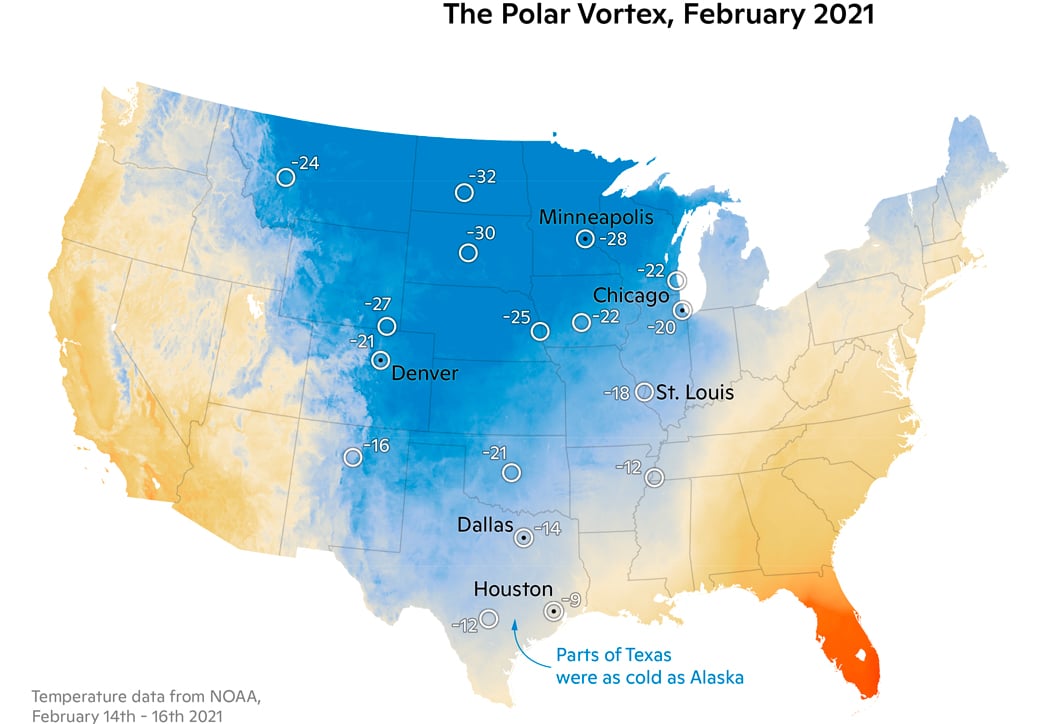
map by Carl Churchill
In the summer, temperatures swung in the extreme opposite direction as a heat wave settled over the Pacific Northwest, breaking records. Temperatures neared 120 degrees Fahrenheit, melting power cables, buckling brick roads, and causing sudden deaths to spike across the region. This phenomenon was also caused by a wavering jetstream that allowed an intense and persistent high-pressure system to trap the heat over the Northwest.
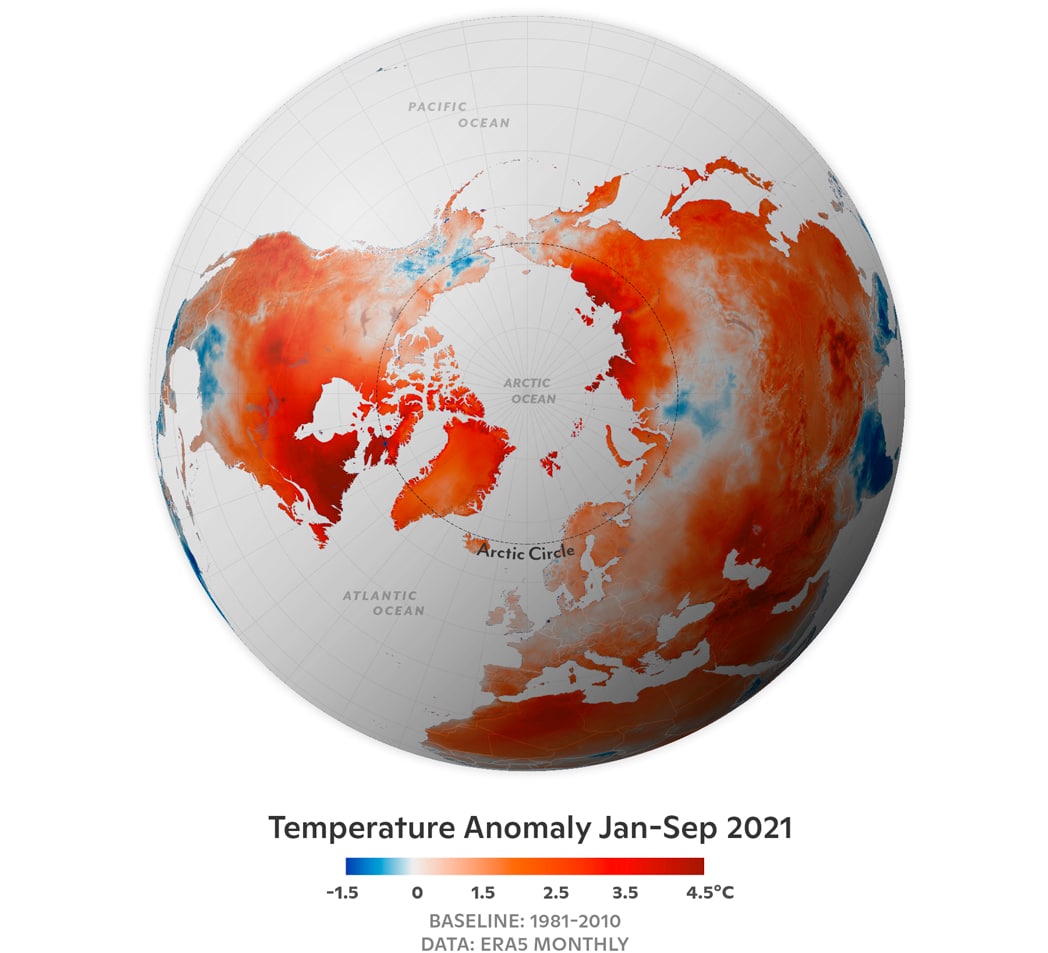
map by Greg Fiske
Hotter than average weather also led to record fires this year. In Siberia, the return of the fire season to the boreal forests brought with it blazes larger than concurrent fires in Greece, Turkey, Italy, the U.S. and Canada combined. Drought in Brazil, paired with rising deforestation rates, led to increased fires in the Amazon.
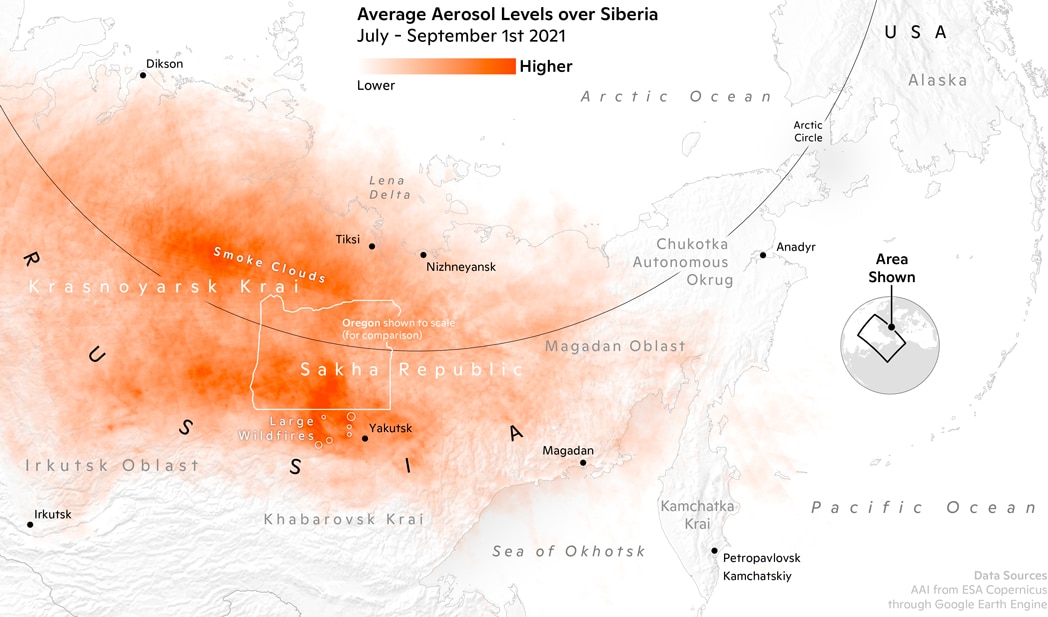
map by Carl Churchill
And finally, just this month the Midwestern U.S. was hit by a devastating string of tornadoes, more severe than usual for this time of year, marking the deadliest December tornado outbreak in history. Tornados are tricky to study, so an understanding of how their prevalence will fluctuate with climate change is not yet clear, but the conditions fostered by a warmer atmosphere are amenable for tornado formation.
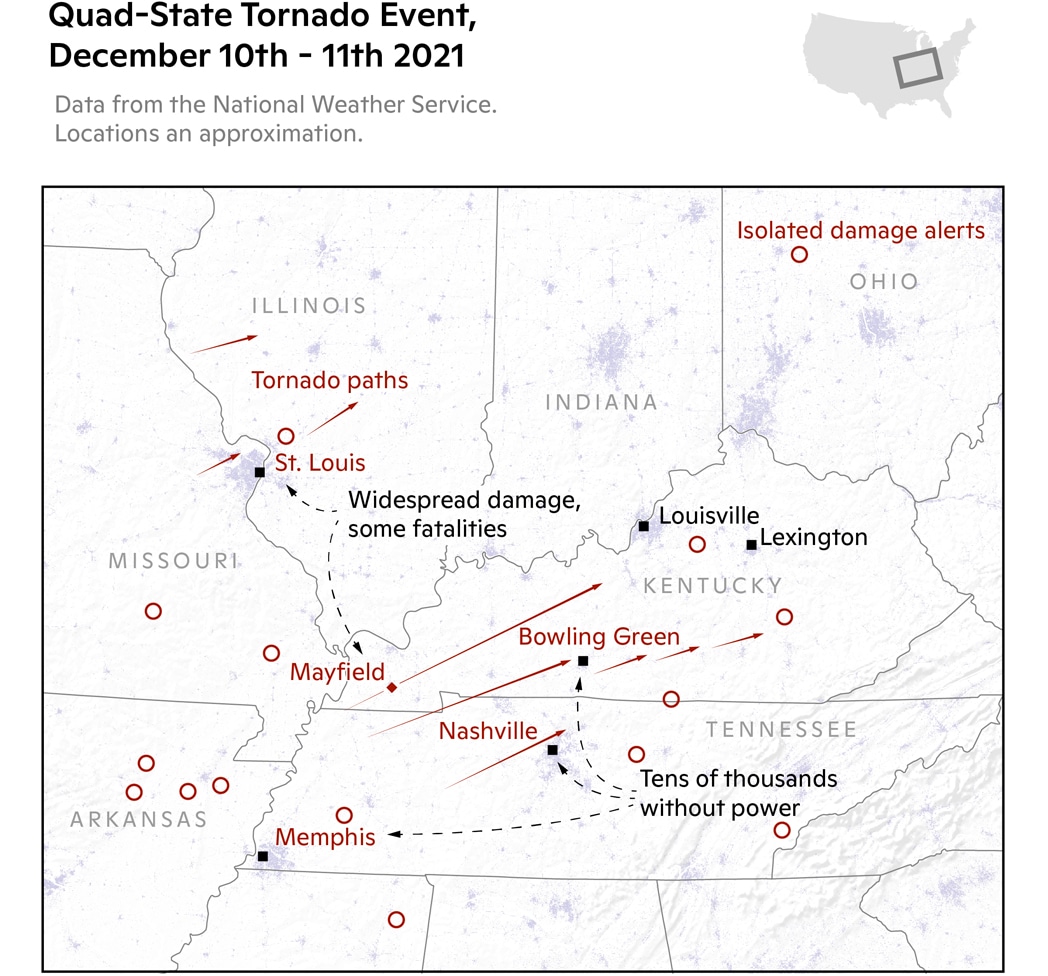
map by Carl Churchill
Increased awareness has led to increased momentum
The undeniable severity of the climate impacts of 2021 has enforced the urgency of cutting emissions. This year, climate action began building the momentum it should have had two decades ago, with more than half of Americans concerned or alarmed about the issue, and governments and private sector organizations across the globe stepping up their commitments to tackling it.
In November, Glasgow, Scotland hosted the 26th annual COP—hailed by some as our “last, best, hope” for successful international cooperation on Climate Change. Although the larger negotiations were not as ambitious as necessary to confidently limit warming to 1.5 degrees Celsius, several steps still pushed the world forward. The conference opened with a pledge from 141 nations to end deforestation by 2030, accompanied by $19 million from governments and private sector groups—a large portion of which was dedicated to supporting Indigenous groups.
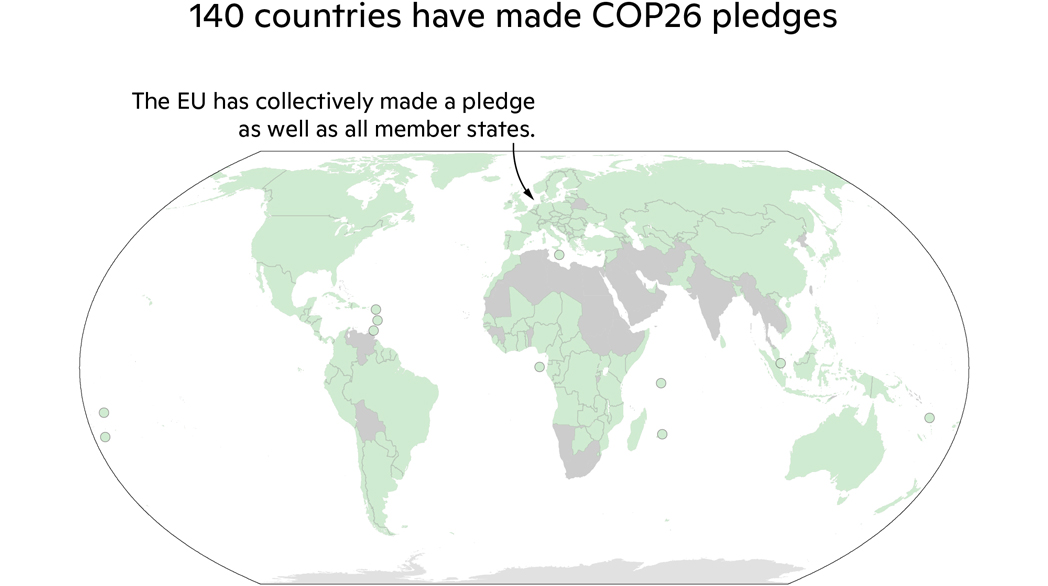
map by Carl Churchill
Earlier in the year, the U.S. Securities and Exchange Commission (SEC) made a request for public comments on a potential requirement for companies to disclose climate risk to their investors. With the impacts of climate change becoming more immediate, the demand for greater certainty around personal risk has grown. The SEC’s inclusion of climate risk in its regulations indicates a broader acknowledgement of the need to prepare for the changes to come. The new presidential administration in the U.S. also signaled its intent to address climate in its first 100 days, staffing up with science and policy advisers and calling an Earth Day summit with leaders from 40 nations.
What to watch for in 2022
So what can we expect as we enter another year?
As long as emissions continue at their current pace, so too will warming and its consequences. Storms, fires, and extreme temperature swings will become a more frequent fixture next year and into the future.
On the international stage, next year’s COP will be one to watch. Nations are expected to return with even more ambitious targets than agreed upon this year. The timelines for formal climate action will accelerate. In the U.S. we can expect to see a ruling from the SEC in early next year.
To match demand for more information on climate risk, Woodwell will be spearheading a collaborative climate risk coalition. The goal of the coalition is to produce an annual climate risk assessment for policymakers to aid future decision-making. Woodwell is also continuing its work conducting risk analyses for climate-related heat, flooding, and fire at the municipality level in several new cities. In 2022, Woodwell will be leading the push for more, transparent climate risk analyses.
2022 will also be a year of expanded research into the impacts of climate change, particularly the rapidly warming Arctic. Woodwell projects will expand our understanding of emissions from thawing permafrost and the behavior of Arctic fires, as well as impacts on extreme weather events. Researchers will also be working closely alongside Indigenous communities to both understand how climate change is impacting vulnerable communities, and support them to take part in climate solutions.




